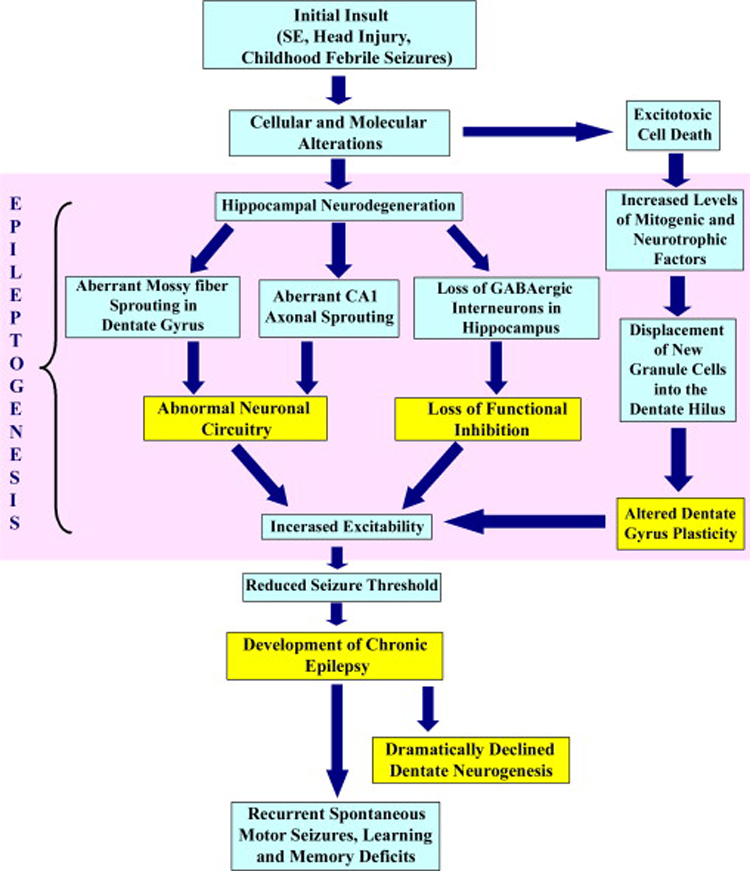Figure 1.

The various aspects of epileptogenesis after the initial brain insult and the evolution of the initial precipitating injury into chronic epilepsy and learning and memory deficits. An initial insult in the form of head injury or the status epilepticus (SE) typically leads to a number of cellular and molecular changes in the hippocampus. A transient surge in the proliferation of neural stem/progenitor cells also occurs in the dentate gyrus immediately after the SE resulting in abnormal neurogenesis. A multitude of alterations in the milieu of the dentate gyrus and the hippocampal CA1 and CA3 subfields lead to abnormal synaptic reorganization, the loss of functional inhibition by the GABAergic system and altered dentate gyrus plasticity, all of which augment the process of epileptogenesis. Collectively, these changes contribute to the occurrence of spontaneous recurrent motor seizures (SRMS) and learning and memory deficits during the chronic phase of epilepsy.
